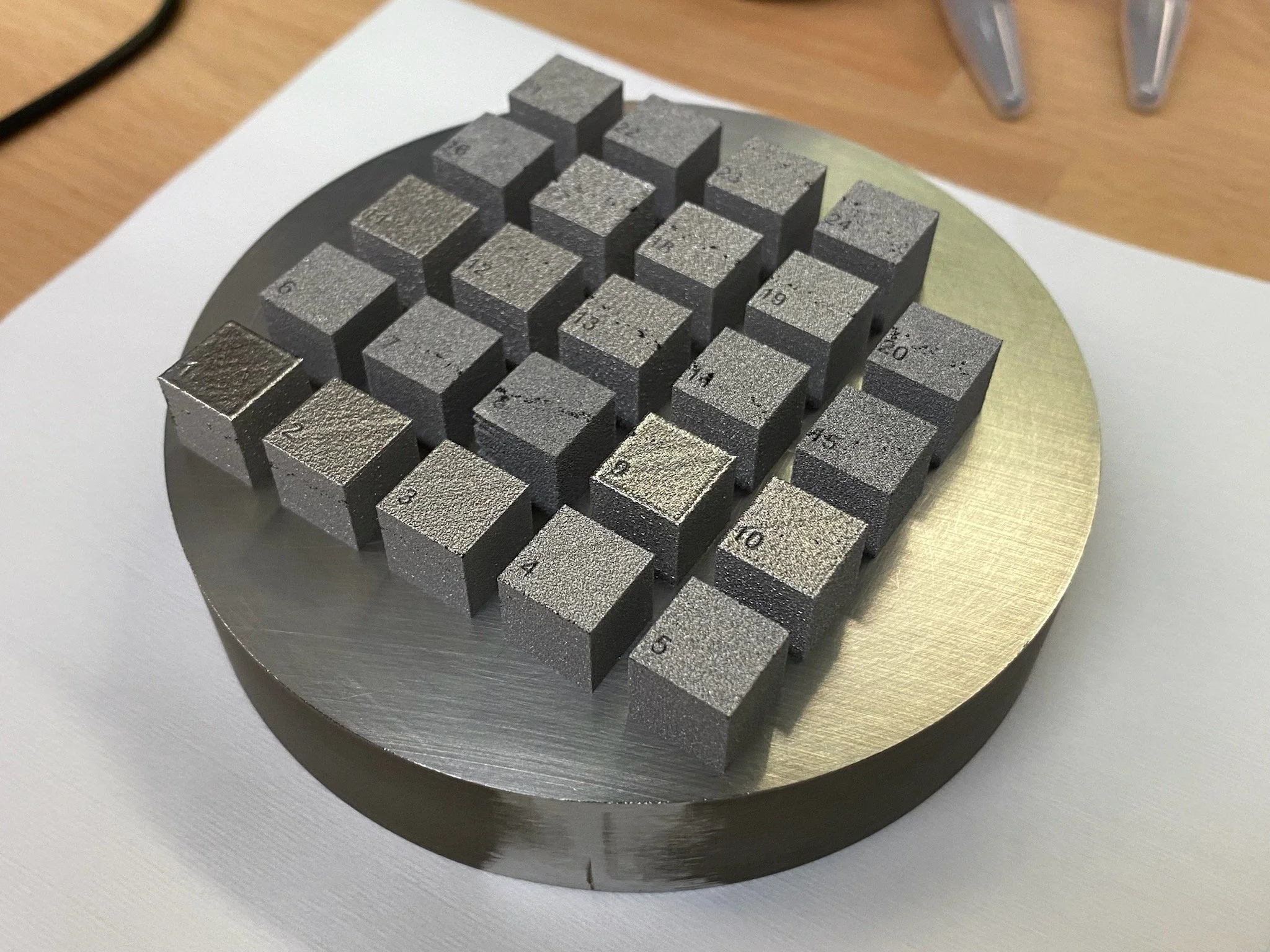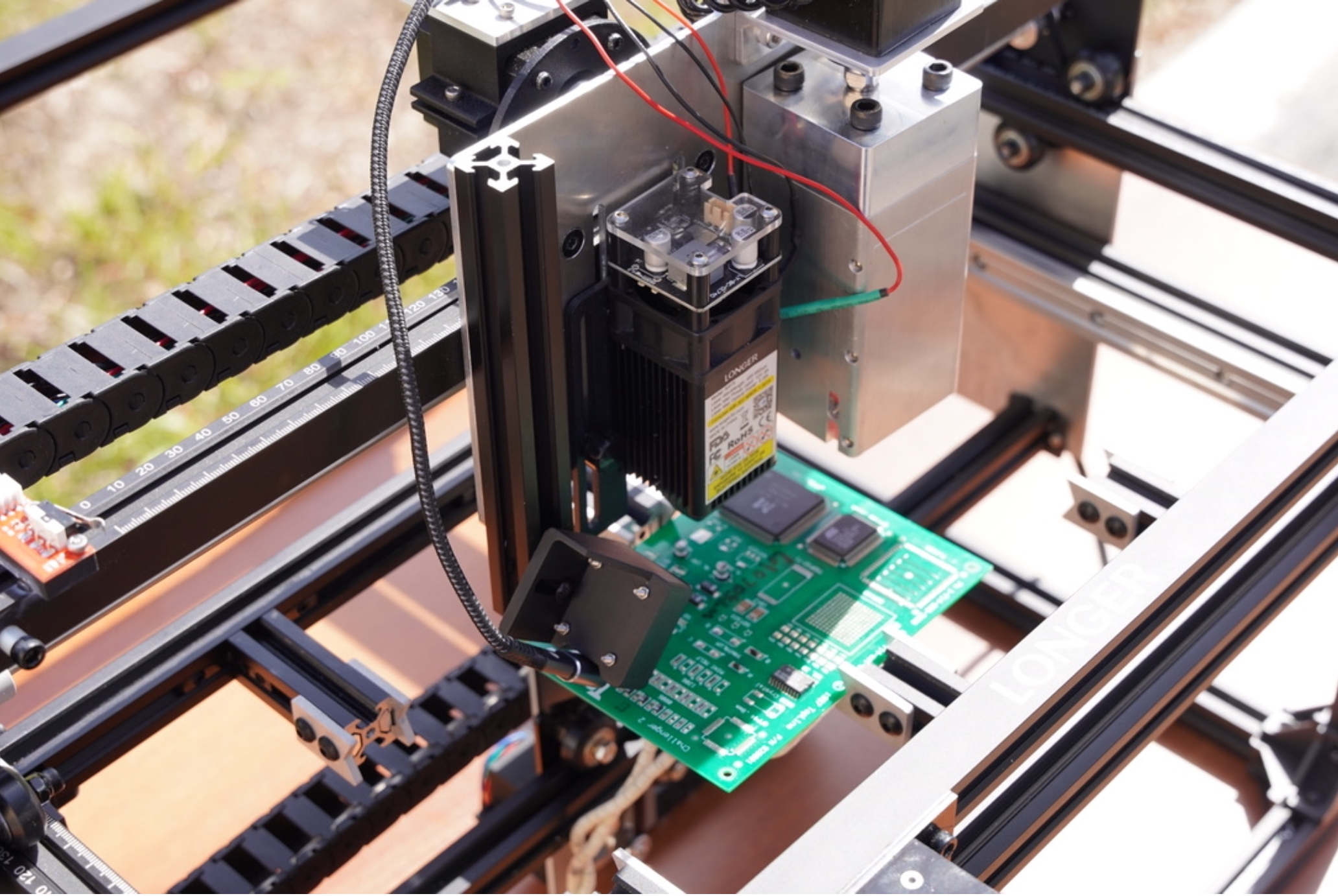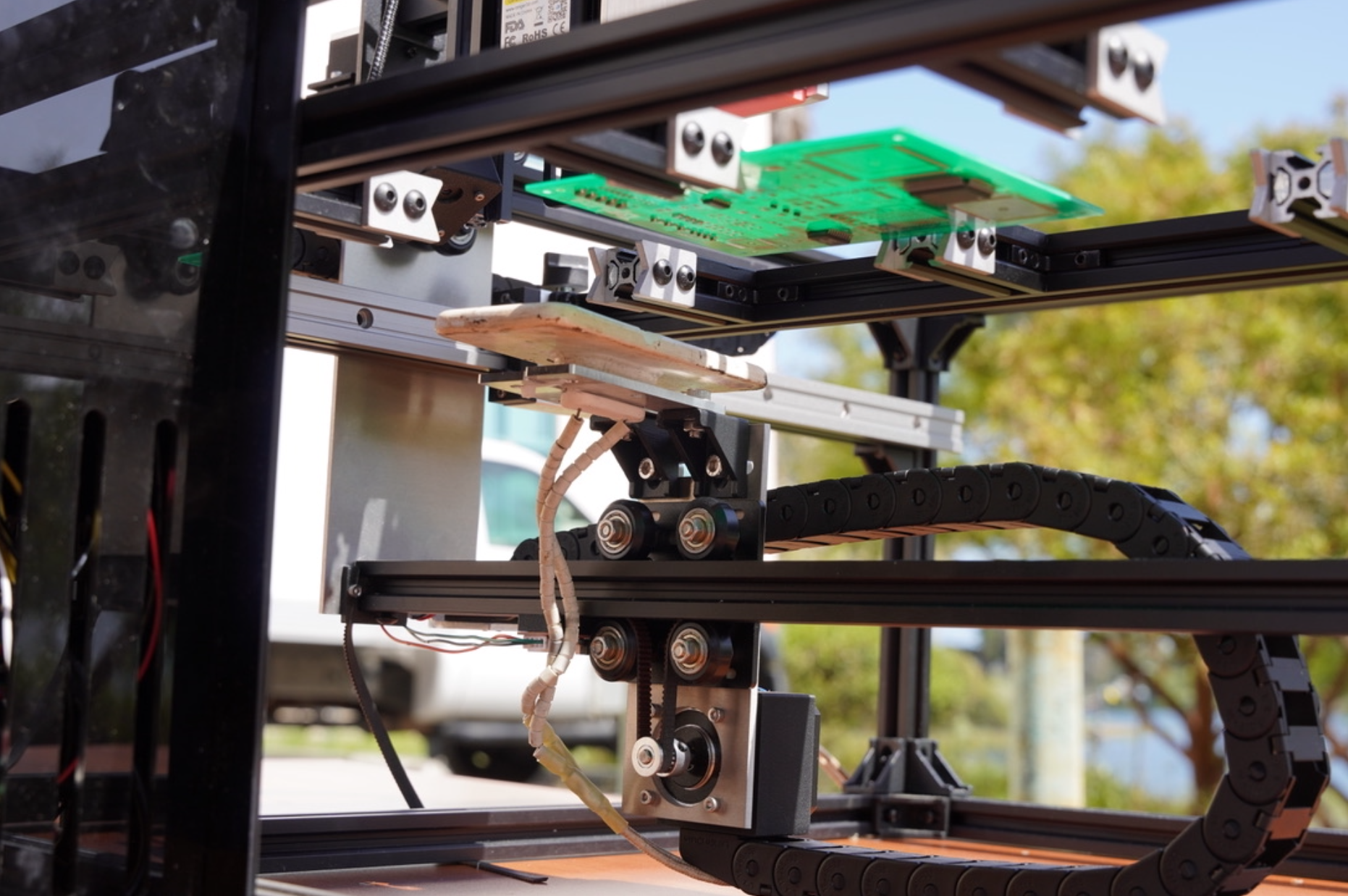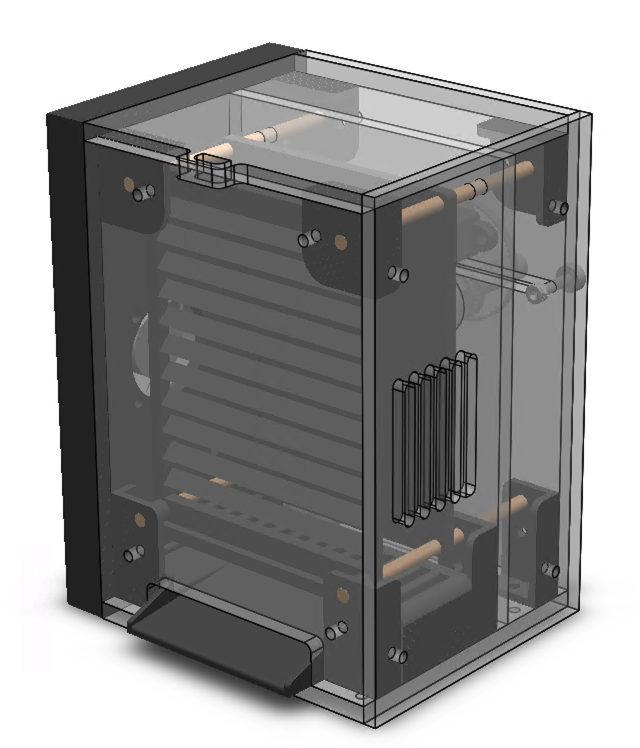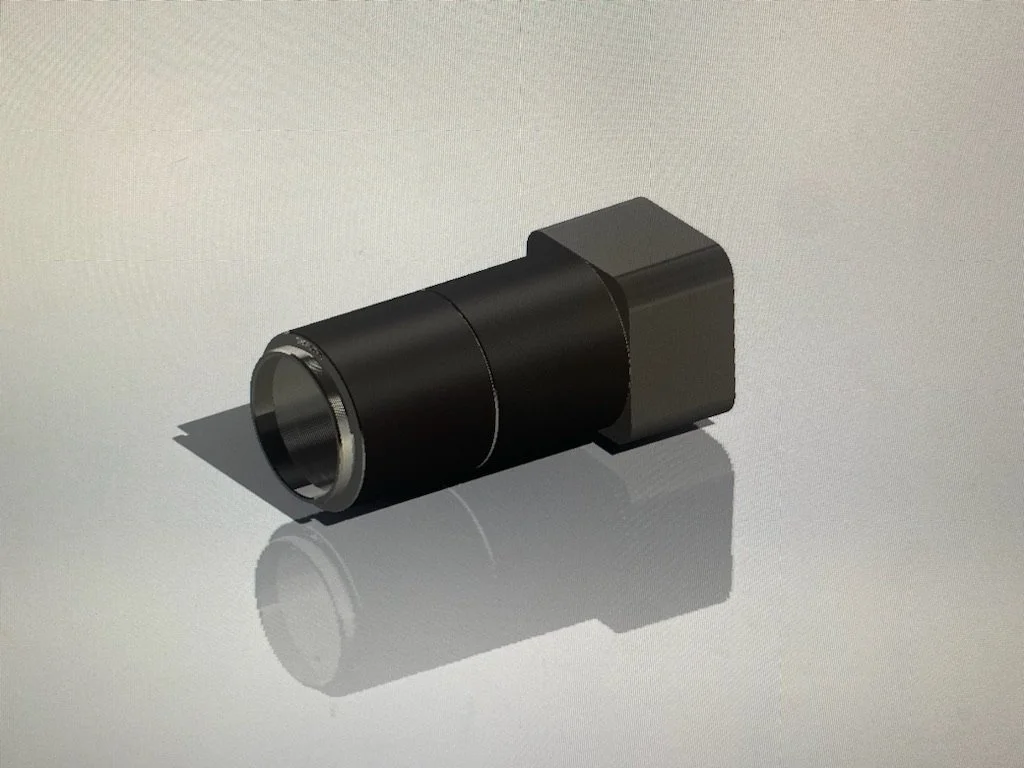Mechanical Engineer & UCSB MS Student
Welcome to my portfolio! I completed my B.S. and M.S. in Mechanical Engineering in June 2024 and June 2025 respectively, both at the University of California, Santa Barbara (UCSB). Through my internships, projects and research, I have gained valuable experience in mechanical design, additive manufacturing, and more.
Graduate Research: Parameter-controlled Porosity in Laser Powder Bed Fusion of Metals
In powder bed fusion (additive manufacturing) of metals, great care is usually taken to optimize machine parameters to ensure the final product is fully dense (or as close to fully dense as possible). However, for certain applications (biomedical implants, heat exchangers, and more), it can be beneficial to have controlled porosity within a printed component. While porosity can be created by simply including it in the CAD model, parameter-induced porosity is less computationally expensive and allows for the creation of smaller pores. My graduate research (MMAX Lab) involves empirically studying how to tune major machine parameters to enable precise control over final porosity for laser powder bed fusion of various different metal alloys. Ongoing responsibilities include:
Operate laser powder bed fusion (LPBF) machine with various alloys (aluminum, steel, titanium, etc.)
Develop CAD models, parameter sets, and build files (Autodesk Netfabb)
Design of experiments (DOE) to correlate parameters to presence of microstructural porosity
Characterize raw powders and printed samples through image analysis and micro-CT
Senior Capstone Project: Gantry Automated Rework Interface (GARI)
Occasional manufacturing defects are inevitable in small-batch printed circuit boards (PCBs). These boards are expensive, so in the case of a defect, it is desirable to desolder and remove the defective component(s) rather than scrap the entire PCB. Usually done by human technicians, this process is called PCB rework and requires time, expensive tools, and a great amount of technical skill to perform. To accelerate the process of consistent and accurate PCB rework, GARI represents a novel semi-automatic laser-based PCB rework system.
To perform rework, an operator simply loads a PCB into the work-holding apparatus, targets the toolhead over the faulty component through user-friendly joystick control, and pushes a button to start the automated rework routine. With active temperature monitoring via thermal camera, a radiative heating element first preheats the region surrounding the defective component from below the PCB. Once the targeted preheating temperature is attained, precise laser spot-heating is used to bring the faulty component up to reflow temperature. At this stage, a vacuum pen is pneumatically deployed to retrieve the now-loose component, thus completing the rework process.
This was a 5-person group project, in which my responsibilities included but were not limited to:
Prototyped and tested laser system for spot-heating and radiative heating assembly for preheating
Modeled 400+ component assembly in SolidWorks with precise GD&T for custom components
Created wiring diagrams and wired high-voltage electronics to deliver required power to each subsystem
Delivered technical presentations and reports describing key design decisions and workflow
At the end of the year, a design competition was held where each capstone team performed a demo of their device in front of a panel of judges selected from faculty and industry. In this competition, GARI received the “Excellence in Mechanical Engineering” award, the highest available award in our category.
For more information on this project, visit the official page for this project through UCSB.
Mechanical Engineering Internship: FEA Simulation of double-cantilever “leaf” for use in bio-tribometer
The Interfacial Engineering Laboratory at UCSB often uses a bio-tribometer to experiment with the friction coefficients of soft bio-gels. This machine utilizes a capacitance probe mounted on a spring-like double-cantilever “leaf” cut from Ti-6Al-4V. For this project, I was tasked with modeling the component in SolidWorks and performing FEA simulations to determine what minor design changes could be implemented to produce double-cantilever leaves with specified desired spring constants. Once a new design was finalized, I prepared a part drawing with accurate GD&T per ASME Y-14.5 2018. This was a good exercise in 3D modeling, finite element analysis, and GD&T.
Other Internships
This section outlines other relevant experience I have gained through internships for which, unfortunately, I do not have any cool photos to showcase.
Mechanical Engineering Internship
Advanced Life Technologies LLC, June 2022 - June 2023
Drafted in SolidWorks and 3D printed 50+ custom mechanical components
Coordinated with other engineers to integrate numerous components in SolidWorks assemblies
Instructed less-experienced interns on usage of FDM and SLA 3D printers for rapid prototyping
Hardware Engineering Internship
Kollmorgen Corporation, June 2023 - June 2024
Produced multipage wiring schematics for large motor test stands
Wrote and debugged motor and motor test stand programs in C#
Soldered small-scale electronics for use in precision servo motor feedback devices
Certifications
GD&T Y14.5 2018 through SAE - December 2024
Fundamentals of Engineering through NCEES - May 2025
Miscellaneous
Contact Me
Derek Murphy
Thanks for checking out my portfolio! To get a hold of me, you can use the form or reach out using any of the information listed below.
Email: derekryanmurphy@gmail.com
LinkedIn: linkedin.com/in/-derekmurphy

